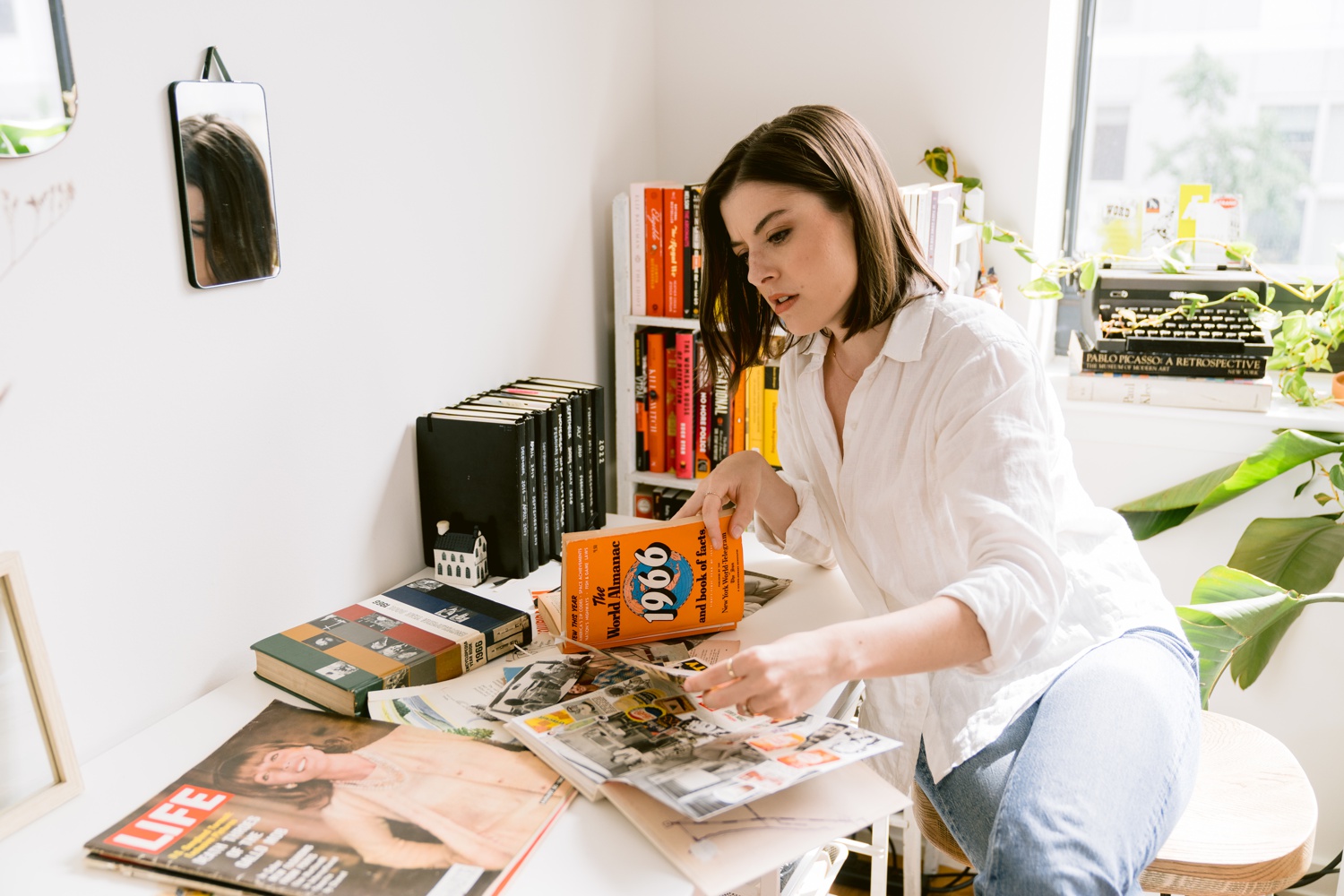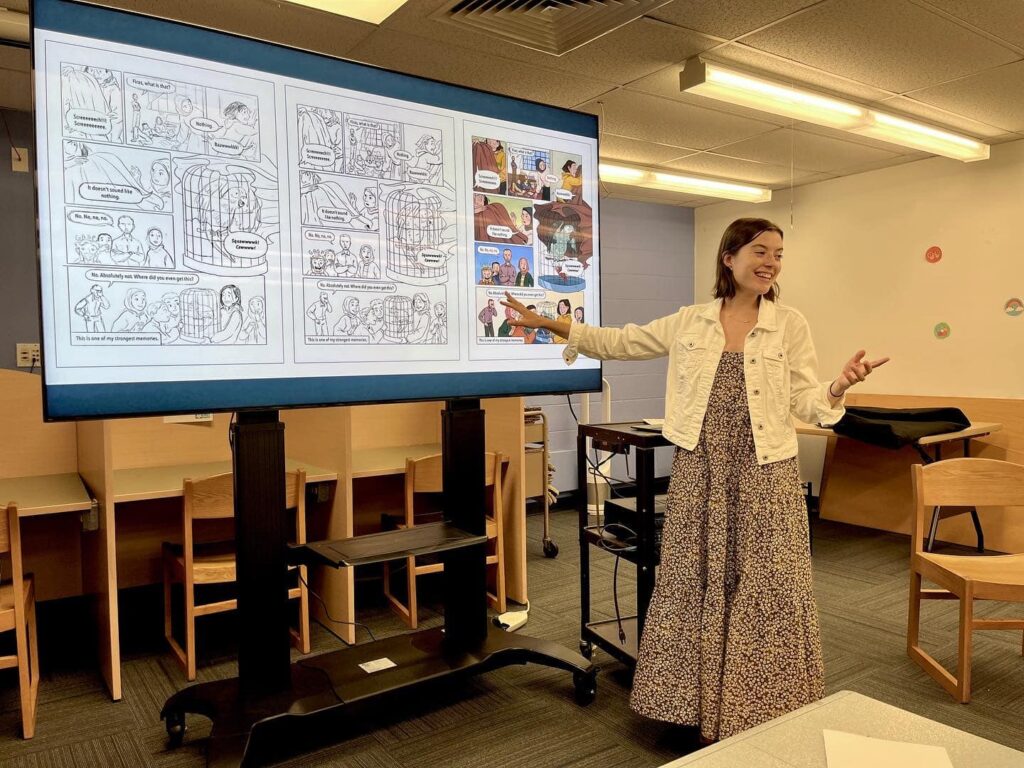
Today, we’ll dive deeper into how exactly a text-only script becomes a gorgeously illustrated graphic novel page, featuring more behind-the-scenes drafts! I’ve shared on the blog before about how I wrote the script for Muhammad Najem, War Reporter, but this time I want to focus on the incredible illustrations by my friend Julie Robine. Let’s go a little deeper on how she turned the written description of each panel into actual illustrations!
Spoiler alert: sometimes she didn’t do exactly what I suggested. And that’s really, really good news.
Graphic Novel Illustration: A Collaborative Process
Most of the time, graphic novels start with words. For Muhammad Najem, War Reporter, I created a script long before knowing which artist would bring it to life. Muhammad and my agent Wendi Gu were instrumental in crafting a manuscript we could be proud to bring to Little, Brown. To learn more about the process of creating a graphic novel script, head over to this blog post!
Once we found out that Julie would do our graphic novel illustration, the real magic began. Let’s look at an example of a pretty straightforward description-to-illustration pipeline. First is my text-only script, and then the final page you’ll find in Muhammad Najem, War Reporter. In addition to a caption, I described in detail what I imagined in the panels.
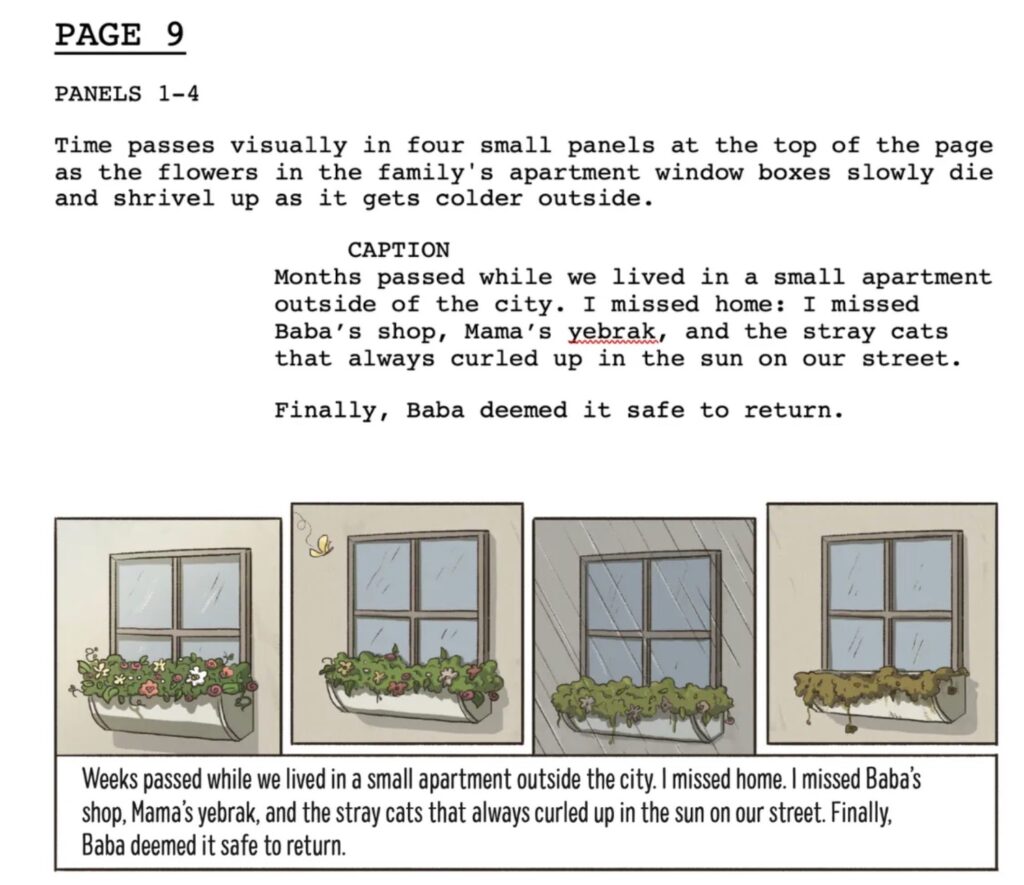
Julie’s illustrations are exactly what I imagined in my head— but better! She added a few little details that made all the difference: the butterfly in the second panel and rain in the third add not only visual interest but also make the passage of time more clear.
Other times, I got overzealous in my descriptions. Luckily, Julie’s illustrations clarified what was really important in a scene. In the below example, I imagined this whole secondary scene, visible through the window, of abandoned apartment buildings pockmarked with gunshot holes. Julie made the very smart decision to keep the focus inside the apartment, rather than splitting the reader’s attention. I think otherwise, the scene would have been too busy— and it’s already a pretty detailed scene!
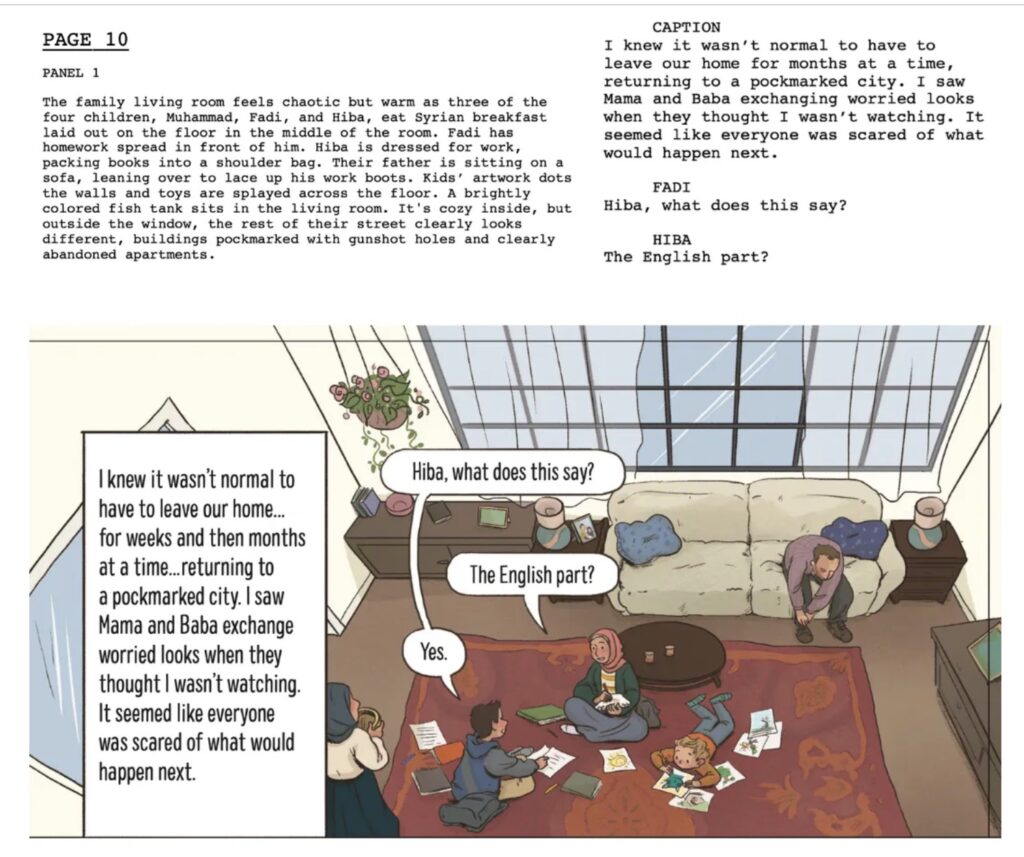
Illustrating a Graphic Novel with Nuance
The above scene is a perfect example of the importance of reference images in graphic novel illustration. This is especially true for memoir. Julie used photos of Muhammad’s actual apartment growing up as a basis for her illustration. In an interview, Julie shared with me that she was really preoccupied with creating these images with accuracy. Those reference images made all the difference in her illustration process!
In fact, Julie made sure the graphic novel illustration process was as collaborative as our script writing. Muhammad gave feedback on the illustrations and pointed out when something needed to be expanded or changed. This is his story, after all.
Even for pages that include almost no words, I wrote detailed descriptions of the illustrations I envisioned. The page below only has eight words that the reader ends up seeing. Regardless, the descriptions I wrote heavily informed Julie’s illustrations.
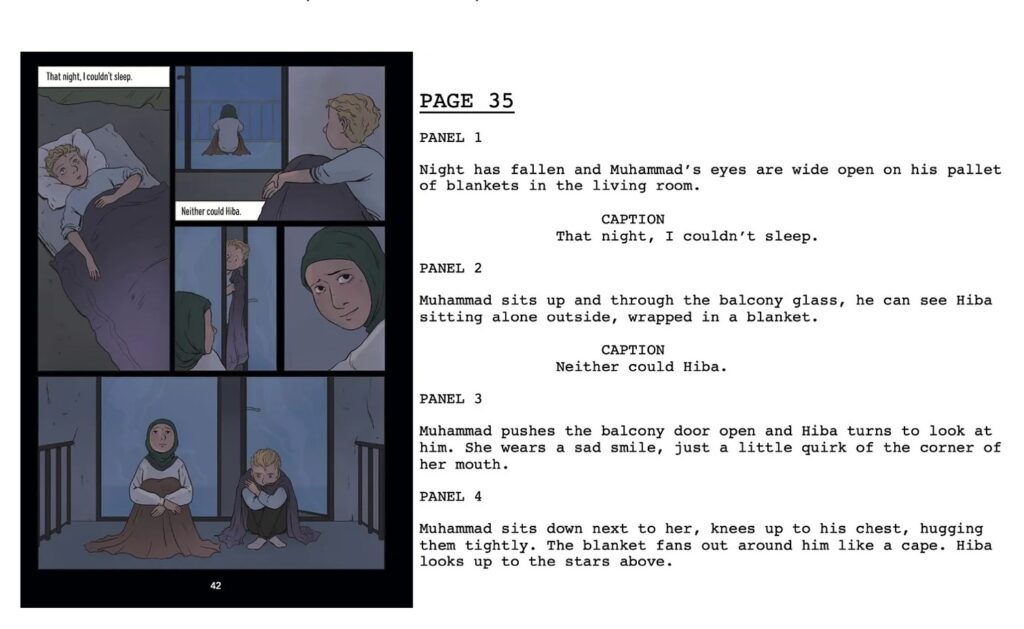
Julie is a phenomenal illustrator for many reasons, but one of my favorite is her ability to communicate very nuanced emotions. Here, she’s able to capture Hiba’s sad smile, “just a little quirk of the corner of her mouth,” as I described it. Julie also made another smart decision here: she split my panel 3 into two separate perspectives: one of Muhammad opening the door and a second panel isolating Hiba’s reaction. That means Hiba’s emotion is stronger.
One more note on this page, and it’s an obvious one: the page itself is black here. Drawing nighttime scenes is tricky in graphic novel illustration, I’ve learned. I’m trying to be aware of light sources as I’m writing nighttime scenes in our next book, like including street lanterns or candles. This case was a little trickier, as they’re in a war zone with few options for light. Julie was able to “darken” this scene by making the background black and using more blue-toned, muted colors in the panels themselves.
Graphic Novels in the Classroom
Are you a parent, educator, or scout leader who knows kids who would love to write their own graphic novels? I offer engaging in person or virtual workshops for K12 students. Using my graphic novel Muhammad Najem, War Reporter, I share behind-the-scenes videos and drafts from the collaborative creative process. Then, I lead students to create the first page of their very own graphic novel! By the end of our workshop, students will have created a full four-panel comic from beginning to end, and have an opportunity to share with the group and get my feedback.
This workshop also happens to satisfy all five requirements of the Girl Scouts Cadette Comic Artist Badge!
Learn more about my workshops here.
